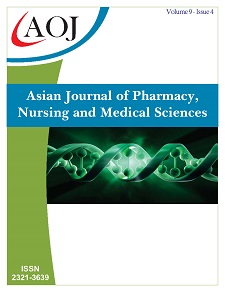Anesthetic Consideration in Case of Large Lymphangioma in Right Atrioventricular Groove: A Case Report
DOI:
https://doi.org/10.24203/ajpnms.v9i4.6701Keywords:
lymphangioma, cardiac, anesthesiaAbstract
Background
Cardiac tumor is a rare disease but it causes various hemodynamic changes depending on location and size. Compression of the right sided heart can lead to impaired venous return and consequent systemic and coronary vascular collapse.
Case
A 62-year-old male who had cardiac lymphangioma on right atrio-ventricular groove. Upon entering the operating room, he was admitted to the tamponade physiology with tachycardia and hypotension. Opioid based anesthesia was performed to minimize myocardial depression, and myocardial function was continuously monitored through Transesophageal echocardiography and pulmonary artery catheter to safely wean the cardio pulmonary bypass (CPB) machine.
Conclusion
Anesthesiologists should be able to predict and respond appropriately to physiological hemodynamic changes according to the location and size of cardiac tumor.
References
Ekmektzoglou KA, Samelis GF, Xanthos T. Heart and tumors: location, metastasis, clinical manifestations, diagnostic approaches and therapeutic considerations. J Cardiovasc Med (Hagerstown) 2008; 9: 769-77.
Hoffmeier A, Sindermann JR, Scheld HH, Martens S. Cardiac tumors--diagnosis and surgical treatment. Dtsch Arztebl Int 2014; 111: 205-11.
Vander Salm TJ. Unusual primary tumors of the heart. Semin Thorac Cardiovasc Surg 2000; 12: 89-100.
Magder S. Understanding central venous pressure: not a preload index? Curr Opin Crit Care 2015; 21: 369-75.
Appleton C, Gillam L, Koulogiannis K. Cardiac Tamponade. Cardiol Clin 2017; 35: 525-37.
Baumann F, Obeid S, Gilhofer T, Siegrist P, von Spiczak J, Lüscher TF, et al. Right coronary artery motion analysis: a novel method to measure right ventricular systolic function by selective coronary angiography. Int J Cardiovasc Imaging 2019; 35: 1557-61.
Al-Omari MA, Finstuen J, Appleton CP, Barnes ME, Tsang TS. Echocardiographic assessment of left ventricular diastolic function and filling pressure in atrial fibrillation. Am J Cardiol 2008; 101: 1759-65.
Lima JA, Weiss JL, Guzman PA, Weisfeldt ML, Reid PR, Traill TA. Incomplete filling and incoordinate contraction as mechanisms of hypotension during ventricular tachycardia in man. Circulation 1983; 68: 928-38.
Mahmood SS, Pinsky MR. Heart-lung interactions during mechanical ventilation: the basics. Ann Transl Med 2018; 6: 349.
Chatterjee K. The Swan-Ganz catheters: past, present, and future. A viewpoint. Circulation 2009; 119: 147-52.
Downloads
Published
Issue
Section
License
Copyright (c) 2021 Min-Woo Yoon, Hyun-Jae Im, Jihyoung Park

This work is licensed under a Creative Commons Attribution-NoDerivatives 4.0 International License.
- Papers must be submitted on the understanding that they have not been published elsewhere (except in the form of an abstract or as part of a published lecture, review, or thesis) and are not currently under consideration by another journal published by any other publisher.
- It is also the authors responsibility to ensure that the articles emanating from a particular source are submitted with the necessary approval.
- The authors warrant that the paper is original and that he/she is the author of the paper, except for material that is clearly identified as to its original source, with permission notices from the copyright owners where required.
- The authors ensure that all the references carefully and they are accurate in the text as well as in the list of references (and vice versa).
- Authors retain copyright and grant the journal right of first publication with the work simultaneously licensed under a Attribution-NonCommercial 4.0 International that allows others to share the work with an acknowledgement of the work's authorship and initial publication in this journal.
- Authors are able to enter into separate, additional contractual arrangements for the non-exclusive distribution of the journal's published version of the work (e.g., post it to an institutional repository or publish it in a book), with an acknowledgement of its initial publication in this journal.
- Authors are permitted and encouraged to post their work online (e.g., in institutional repositories or on their website) prior to and during the submission process, as it can lead to productive exchanges, as well as earlier and greater citation of published work (See The Effect of Open Access).
- The journal/publisher is not responsible for subsequent uses of the work. It is the author's responsibility to bring an infringement action if so desired by the author.


